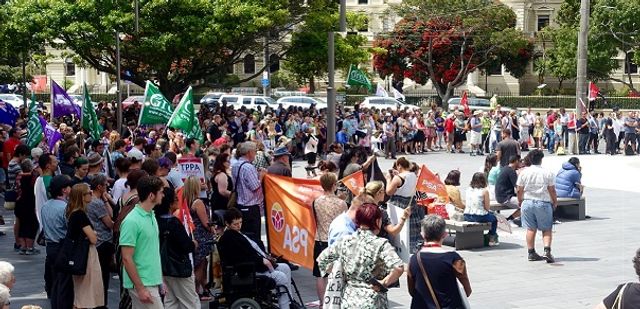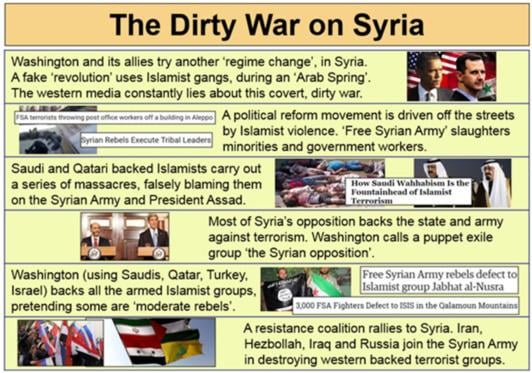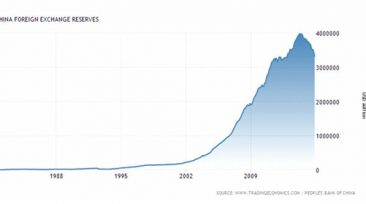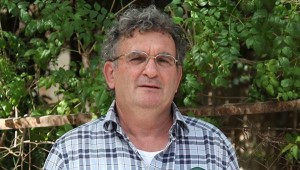Although Shot by Sirhan, Paul Schrade Calls for His Release
On Wednesday morning in San Diego, Sirhan Sirhan, the convicted assassin of Bobby Kennedy, will once again be considered for parole. Sirhan was originally scheduled for release in 1984 but after intense political pressure, his parole date was rescinded and he has since been denied 13 times.
At the hearing, Sirhan will come face-to-face with Paul Schrade for the first time — a close friend of the Kennedy family who, on June 5, 1968, was walking behind the senator when the shooting started.
For over 40 years, Schrade, now 91, has been campaigning to reopen the case, based on eyewitness evidence that Sirhan could not have fired the fatal shot described in Kennedy’s autopsy and an analysis of the only known audio recording of the shooting which indicates that 13 shots — and two guns — were fired.
Schrade plans to tell the parole board that new evidence shows Sirhan shot him and several others — but did not shoot Kennedy. In a short statement released in advance of the hearing, he says:
The LAPD and LA DA knew two hours after the fatal shooting of Robert Kennedy that he was shot by a second gunman and they had conclusive evidence that Sirhan Bishara Sirhan could not and did not do it. The official record shows that [the prosecution at Sirhan’s trial] never had one witness – and had no physical nor ballistic evidence – to prove Sirhan shot Robert Kennedy. Evidence locked up for 20 years shows that the LAPD destroyed physical evidence and hid ballistic evidence exonerating Sirhan, and covered up conclusive evidence that a second gunman fatally wounded Robert Kennedy.
Schrade argues that a closer look at the bullet that hit him proves a second gun was fired and Sirhan could not have killed Robert Kennedy.
As labor chairman of Kennedy’s presidential campaign, he stood beside the senator during his victory speech at the Ambassador Hotel in Los Angeles, on the night of the crucial California Democratic primary that kept hopes of an RFK Presidency alive.

Paul Schrade on the floor of the Ambassador Hotel pantry after the shooting Photo credit: California State Archives
After the speech, Schrade was walking six to eight feet behind Kennedy through a kitchen pantry, en route to a late-night press conference, when the shooting started. The senator stopped to shake hands with some busboys and had just turned to walk forward again when Schrade saw flashes, heard “a crackling sound like electricity” and thought he was being electrocuted by wet television cables. He was hit in the center of the forehead, fell to the floor and blacked out.
Later, he said “I was lucky. If the bullet that hit me in the forehead had been a fraction of an inch lower, I would have been killed instantly.”
The autopsy concluded one bullet passed through the right shoulder pad of Kennedy’s jacket without entering his body, two bullets hit him under his right armpit at a sharp upward angle, and the fatal shot entered one inch behind the ear and penetrated the brain.
Kennedy was hit four times and five others were injured, so the LAPD had to account for how nine shots were seemingly fired from Sirhan’s eight-shot revolver.
LAPD criminalist Dewayne Wolfer’s solution was to claim Sirhan’s second bullet “passed through the right shoulder pad of Kennedy’s suit coat…and traveled upward [at an 80-degree angle] striking victim Schrade in the center of his forehead.”
As Schrade later told author Dan Moldea, the only way a bullet could do this would be “if I was nine feet tall or had my head on Kennedy’s shoulder.” As Wolfer had already accounted for all eight bullets in Sirhan’s gun, this meant a ninth shot was fired, and two more bullets were found in the center divider of the pantry door frame by FBI agent William Bailey within hours of the shooting.
Fired From Only An Inch Away

LAPD criminalist Dewayne Wolfer (left) and L.A. County Coroner Dr. Thomas Noguchi (center) trace the trajectories of the bullets fired at Robert F. Kennedy Photo credit: California State Archives
Four shots were fired at Kennedy from behind, and to his right, with the fatal bullet fired from only an inch away.
Eyewitnesses placed the barrel of Sirhan’s gun two to five feet in front of Kennedy, to his left.
Hotel maître d’ Karl Uecker, who was leading Kennedy through the pantry while holding his right arm, insisted he grabbed Sirhan after two shots — and diverted his gun hand away from the senator. Sirhan, his gun hand pinned to a steam table, nonetheless continued to fire wildly. But Uecker insisted that Sirhan could not have fired the four shots that hit Kennedy.
Uecker’s colleague Eddie Minasian confirmed Uecker grabbed Sirhan after the second shot and saw Paul Schrade fall before the senator, suggesting Schrade was actually hit with the first shot.
“It wasn’t that gun”
Frank Burns, an attorney who was standing beside him in the pantry, also had a clear view of Sirhan, and told Dan Rather: ‘It wasn’t that gun.’
As Kennedy lay on the floor and Paul Grieco tried to staunch the flow of blood behind his right ear, the senator looked up and asked, “Is Paul all right?” A photograph taken at the scene shows Schrade’s right shoe by the pool of blood around the senator’s head.

Robert F. Kennedy on the floor of the Ambassador Hotel pantry after the shooting. Paul Schrade’s shoe can be seen in the foreground. Photo credit: California State Archives
In 1993, Dan Moldea interviewed coroner Thomas Noguchi about the sequence of Kennedy’s wounds. Noguchi said the fatal bullet, striking an inch behind Kennedy’s right ear “would have taken him off his feet,” so he concluded Kennedy raised his arm to protect himself after seeing a gun or hearing the first shot, and that the fifth shot was what killed him.
If Uecker grabbed Sirhan’s hand after the second shot, how could the fatal shot have been fired by Sirhan?
Phil van Praag’s analysis of the Pruszynski recording – the only known recording of the shooting – supports two firing positions, in front of and behind Kennedy.
There’s a second-and-a-half pause after the first two shots, giving Uecker reaction time to lunge at Sirhan and grab his gun hand.
Between shots three and four, and shots seven and eight, Van Praag found “double shot intervals” – shot sounds so close together, they could not have been fired from the same gun.
Five shots – numbered 3, 5, 8, 10 and 12 – display a “frequency anomaly” which indicates a different gun firing in the opposite direction from Sirhan’s weapon.
Background
Paul Schrade first called for a reinvestigation of Robert Kennedy’s murder in December 1974. Two years later, after he brought a civil suit with CBS News, the firearms evidence was retested but the results were inconclusive.
He led the campaign to declassify the police investigation files on the case, and their eventual release in 1988 exposed Wolfer’s failings and the LAPD’s systematic destruction of evidence.
He recently worked with the Kennedy family to turn the derelict Ambassador Hotel into the Robert F. Kennedy Community Schools complex, but still believes justice has not been served in this case. He will address Sirhan directly at the end of the hearing and is expected to call for his release and a new investigation into Robert Kennedy’s murder.
*****
In March, Sirhan will turn 72 years old, having spent two-thirds of his life in prison for a crime he has consistently said he cannot remember committing.
On the first day of testimony at his trial, Sirhan’s attorney led him through the charges and asked: “Did you shoot Paul Schrade?”
“That is what the indictment reads. I must have,” replied Sirhan. “Were you aware of the fact that you shot Mr. Schrade?” “I was not aware of anything.”
For three years prior to his last parole hearing in 2011, Dr. Daniel Brown of Harvard Medical School spent over sixty hours with Sirhan trying to recover his memory of the shooting. Dr. Brown concluded Sirhan’s amnesia for events before and during the shooting was real, but his findings were ignored by the parole board, who noted “some degree of…distrust, quite frankly [in] you remembering parts of this and not remembering others.” They claimed the gaps in Sirhan’s memory show he still lacks remorse and has not accepted full responsibility for his crime.
The parole board is obliged to accept Sirhan’s first-degree murder conviction and only the courts have the power to retry the case. Sirhan’s parole denials repeatedly cite the “RFK must die” automatic writing in his notebooks as evidence of the cold, callous, premeditated nature of the crime, even though Sirhan claims no memory of writing in the notebooks or the shooting itself, and the defense and prison psychiatrists who have worked most closely with him over the years believe both were done in a dissociated state.
Following Sirhan’s parole denial in 2011, his attorneys William Pepper and Laurie Dusek vigorously pursued a habeas corpus petition started by the late Larry Teeter in 1997 and their court filings in their battle with the state of California are now available online.
At the heart of the petition are detailed declarations concerning two major new pieces of evidence developed over the last ten years that crystallise the second gun and Manchurian candidate theories that first emerged in the early seventies.
• Forensic audio expert Phil Van Praag documents his findings that at least 13 shot sounds can be heard on the only known recording of the shooting; and
• A declaration by Dr. Daniel Brown that authenticates both Sirhan’s amnesia and the hypnotic programming that generated the “RFK must die” repetitions in his notebooks and triggered the assassination. In January 2015, the Central District Court of California denied the petition, refusing to grant Sirhan even an evidentiary hearing to assess the merits of this new evidence.
The parole criteria present a number of Catch 22 scenarios for Sirhan. How can you show remorse and insight into the crime when you can’t remember what happened? How can you accept full responsibility for the crime when you’re still contesting the case, and the state’s version of events has been superseded by new exculpatory evidence the court refuses to hear?
*****

Sirhan Sirhan in his jail cell, August 1968 Photo credit: California State Archives
In 1975, the California state legislature moved to introduce fixed sentences and give those on indeterminate life sentences “a date certain” for their release. After deductions for his time in jail during the trial, Sirhan was given a parole date of March 1, 1985.
Other prisoners convicted of first-degree murder had been freed, on average, after 11 years. Given Sirhan’s record of good behavior, they couldn’t justify giving him more time because of who he killed.
The chairman of the panel told the press he was “proud as hell that [they] didn’t search for some bogus reason to deny him…This should prove we don’t have any political prisoners.”
An Exemplary Inmate
With the support of the Mary Ferrell Foundation, I recently published all available transcripts of Sirhan’s parole hearings dating back to 1978. They chart Sirhan’s life in prison over the last 48 years and show he has been an exemplary inmate, with no prison violations since 1972 and an excellent work record.
The earliest progress review hearings from 1978 to 1980 show that while working towards his release date, Sirhan was a straight A student at Hartnell College, going on to obtain an A.A. degree from the less than ideal learning environment of a protective housing unit. He received laudatory commendations from the prison staff and the prison psychologists and the parole panel deducted a further six months for good behavior.
Then came the 10-day parole rescission hearings in 1982 that changed all that and in his closing statement, Sirhan sensed the inevitable:
I sincerely believe that if Robert Kennedy were alive today, he would not countenance singling me out for this kind of treatment. I think he would be amongst the first to say that however horrible a deed I committed 14 years ago, it should not be the cause for denying me equal treatment under the laws of this country.
His parole date was rescinded and Deputy District Attorney Larry Trapp later told the press, “Political assassination in America must never be rewarded by freedom.”
Trapp was the guiding hand behind the rescission hearings and ever-present at Sirhan’s parole hearings in the eighties and nineties. But as William Klaber notes in his book, Shadow Play (St. Martin’s Press, 1997), Trapp made serious factual errors, repeatedly claiming Sirhan began to plot Kennedy’s death on January 31, 1968. He based this false claim on automatic writing Sirhan produced under hypnosis eight months after the shooting in preparation for trial.
In a television interview after the infamous 1985 hearing – when the assembled press accidentally listened in to a jokey three-minute deliberation and heard a member of the parole board discuss transferring Sirhan to another prison and say, “we’ll send his ass down there for as long as possible” – Sirhan made his frustration clear:
This country is governed by the rule of law, it is not governed by terrorist tactics. Now, if you want to deprive me of my rights under your own established rules and your own laws, at least come out and tell me that outright rather than to tell me that you didn’t go to Alcoholics Anonymous programs and on that basis, we’re going to deprive you of your liberty. Tell me that you’re a terrorist and we don’t want you out of our prison, I can live with that. But all these deceptions and devious ways of denying me parole, I don’t think it’s fair.
From 1989 to 1992, Sirhan was chairman of the Alcoholics Anonymous group in his unit, even though before the four Tom Collins cocktails he consumed on the night of the shooting, he had only touched alcohol a couple of times in his life. When the AA meetings clashed with his prison work roster, he had to drop them. And since his relations with the parole board soured in the nineties, he openly questioned why he should jump through hoops for them when they showed no sign of ever granting him parole.
In 1992, the prison guards told Sirhan he had to wear chains and manacles in the hearing room, so both he and his attorney refused to attend. Two years later, Larry Teeter took over as Sirhan’s attorney. His habeas corpus petition was filed two days after the 1997 hearing, in which Sirhan proclaimed his innocence for the first time, based on new exculpatory evidence in Teeter’s petition.
The commissioner almost threw Teeter out of the hearing when he skillfully tried to apply some of this new evidence to Sirhan’s parole criteria. Sirhan was left fuming that his attorney had been repeatedly told to shut up, and subsequently refused to cooperate with the parole board or attend his next three hearings.
The First “Arab Terrorist?”

New York City on September 11, 2001 Photo credit: Comer Zhao / Flickr (CC BY-SA 2.0)
Then, a month after 9-11, the Washington Post published the following scurrilous leak from the California prison system in its ‘Reliable Source’ column:
The Post’s Petula Dvorak reports that prison authorities in California wonder why Robert F. Kennedy assassin Sirhan Sirhan shaved his head and requested a television on Sunday, Sept. 9, two days before the terrorist attacks. “These are unusual requests for him; he is usually pretty much isolated and reclusive,” prison spokesman Lt. Johnny Castro told Dvorak. The 57-year-old Palestinian immigrant . . . frequently mails letters to outsiders, and the FBI is probing whether Sirhan’s letters were not monitored because they were written in Arabic. But Sirhan lawyer Lawrence Teeter said his client “was outraged at the terrorist attacks and remarked spontaneously in a letter to his brother he hopes that the people who did this are burning in hell.”
According to Sirhan’s brother Munir, a departing prisoner had given Sirhan his television two days before 9-11. And when the prison guards saw Sirhan watching 9-11 coverage with a towel on his head after a shower, they branded him an Arab terrorist who had foreknowledge of the attacks.
Solitary Confinement for a Year
Prison spokesperson Sabrina Johnson later confirmed they had “documentation” to show that Sirhan was a threat, and he was disciplined accordingly. Sirhan’s brother said this meant “he was thrown into solitary confinement for the next year until we were finally able to prove he was innocent of their claims and get him out. He was allowed out of his cell, I think it was seven minutes twice a week to shower, and he was shackled, hands and legs.”
Later parole hearing transcripts show this episode had a profound effect on Sirhan’s welfare in prison. He stopped cooperating with the parole board and according to psychological reports, became increasingly withdrawn.
Since 9-11, he has been demonised as the first Arab/Islamic terrorist, even though he was raised and still is a practicing Christian. He has never had any ties to terrorist organisations.
In 2011, Sirhan appeared in public for the first time in 14 years, with renewed hope after his sessions with Dr. Brown and the new court filings by Pepper and Dusek but once more, he was denied. Self-help programming options have always been limited in his protective housing unit, so the parole board again touted the AA 12-step program as the best tool to give him insight into his crime and seemed to ignore the insight gained through his three years of sessions with Dr. Brown.
If released, Sirhan would be deported to Jordan, where he claims he would be a danger to nobody. But as The Marshall Project recently discovered in a year-long examination of America’s parole boards, parole decisions are often driven not by public safety but by politics. Since 1982, California has treated Sirhan like a political prisoner who will never be released, not a human being who has served his time and has the right to a fair hearing and the rule of law.
Since Sirhan’s interview with David Frost for Inside Edition in 1989, recorded interviews with inmates have been banned in California, so parole hearings are his only chance to publicly state his case for release. While Court TV covered the 1994 proceeding live, generally Sirhan’s hearings get only the briefest mention on the news but the parole board in California recently banned audio and video recording of the hearings, censoring Sirhan’s voice from the continuing debate about his case. At this rate, the public may never see or hear from him again.
Dr. Shane O’Sullivan is an author, filmmaker and researcher at Kingston University, London. His work includes the documentary RFK Must Die (2007) and the book Who Killed Bobby? (2008). He blogs on the Sirhan case at
http://www.sirhanbsirhan.com
![]() Japan: New Docs Link Polluted Drinking Water Supply to Massive US Military Base
Japan: New Docs Link Polluted Drinking Water Supply to Massive US Military Base ![]() Canada Sells Weapons to State Sponsor of Terrorism: Class Action Law Suit against Ottawa over $15 Billion Saudi Arms Deal
Canada Sells Weapons to State Sponsor of Terrorism: Class Action Law Suit against Ottawa over $15 Billion Saudi Arms Deal![]() Human Rights Watch Report Exposes Abusive French State of Emergency
Human Rights Watch Report Exposes Abusive French State of Emergency ![]() Israel Demolishes Homes and Tells Palestinian Owners to Pay the Costs
Israel Demolishes Homes and Tells Palestinian Owners to Pay the Costs ![]() Pentagon Releases 200 Photos of Bush-Era Prisoner Abuse, Thousands Kept Secret
Pentagon Releases 200 Photos of Bush-Era Prisoner Abuse, Thousands Kept Secret 



 Tanzania’s application of the Railway Master Plan visualizes a
Tanzania’s application of the Railway Master Plan visualizes a  The October 2015 elections in Tanzania’s semi-autonomous archipelago were
The October 2015 elections in Tanzania’s semi-autonomous archipelago were![angolan-chinese-engineers[1]](http://orientalreview.org/wp-content/uploads/2016/02/angolan-chinese-engineers1-300x202.jpg) The recent rumors about a
The recent rumors about a 


















































